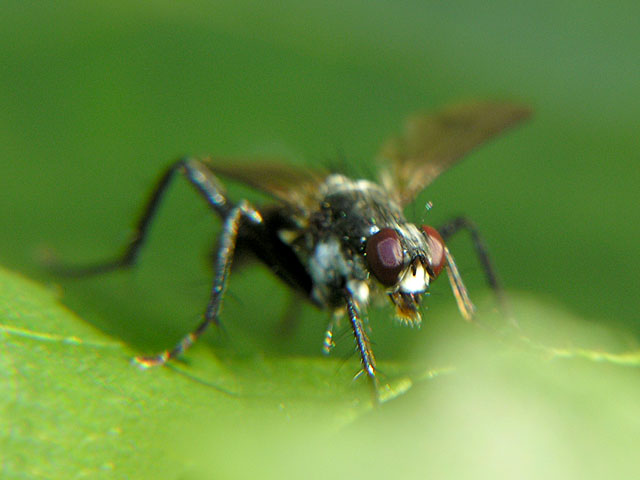Diptera.info :: Identification queries :: Diptera (adults)
|
elongated black fly (rhino sp.?)
|
|
| Robert Heemskerk |
Posted on 28-08-2006 18:52
|
|
Member Location: Amsterdam, Netherlands Posts: 2082 Joined: 17.10.05 |
hello flyforum, This elongated black/dark-grey fly got a white face. The yellow/braun wing was a bit broken, in the wing there are some black parts.. The Abdomen are typical.., 'torpedo-shaped'  Eyes are wine-red(pink) and legs are large (1st femur is white) Scutellum is partly white?(Difficult to see) size ~ 12-14 mm place: Amsterdam Woodforest What kind of fly could this be? robert heemskerk Robert Heemskerk attached the following image:  [90.95Kb] Edited by Robert Heemskerk on 28-08-2006 18:53 |
| Robert Heemskerk |
Posted on 28-08-2006 18:52
|
|
Member Location: Amsterdam, Netherlands Posts: 2082 Joined: 17.10.05 |
picture 2
Robert Heemskerk attached the following image:  [68.52Kb] Edited by Robert Heemskerk on 28-08-2006 18:52 |
| Kahis |
Posted on 28-08-2006 18:59
|
|
Member Location: Helsinki, Finland Posts: 1999 Joined: 02.09.04 |
Cordilura (Scatophagidae). The larvae of this genus develop in the roots and lower stems of Carex, Juncus etc and the adults are common in various wetlands. The scutellum is black. In the 1st pic the anal lobe (a part of the wing) reflects flash or sun in front of the scutellum and in the 2nd pic we see the white reflective dusting which is not obvious when the fly is examined from other directions. Kahis |
| Tony Irwin |
Posted on 28-08-2006 19:05
|
|
Member Location: Norwich, England Posts: 7327 Joined: 19.11.04 |
Looks very like Cordilura ciliata female. This species is rather common in woods near Norwich at the moment.
Tony ---------- Tony Irwin |
|
|
|
| Robert Heemskerk |
Posted on 29-08-2006 00:52
|
|
Member Location: Amsterdam, Netherlands Posts: 2082 Joined: 17.10.05 |
thank you very much Kahis and Tony. I can say your knowledge is somehow 'not human'  (and that is a compliment  ) )This Cordilura sp. (perhabs ciliata) was seen in a swampy biotope, lots of trees in a muddy forest. I will call it Cordilura sp. Edited by Robert Heemskerk on 29-08-2006 00:53 |
| Jump to Forum: |













